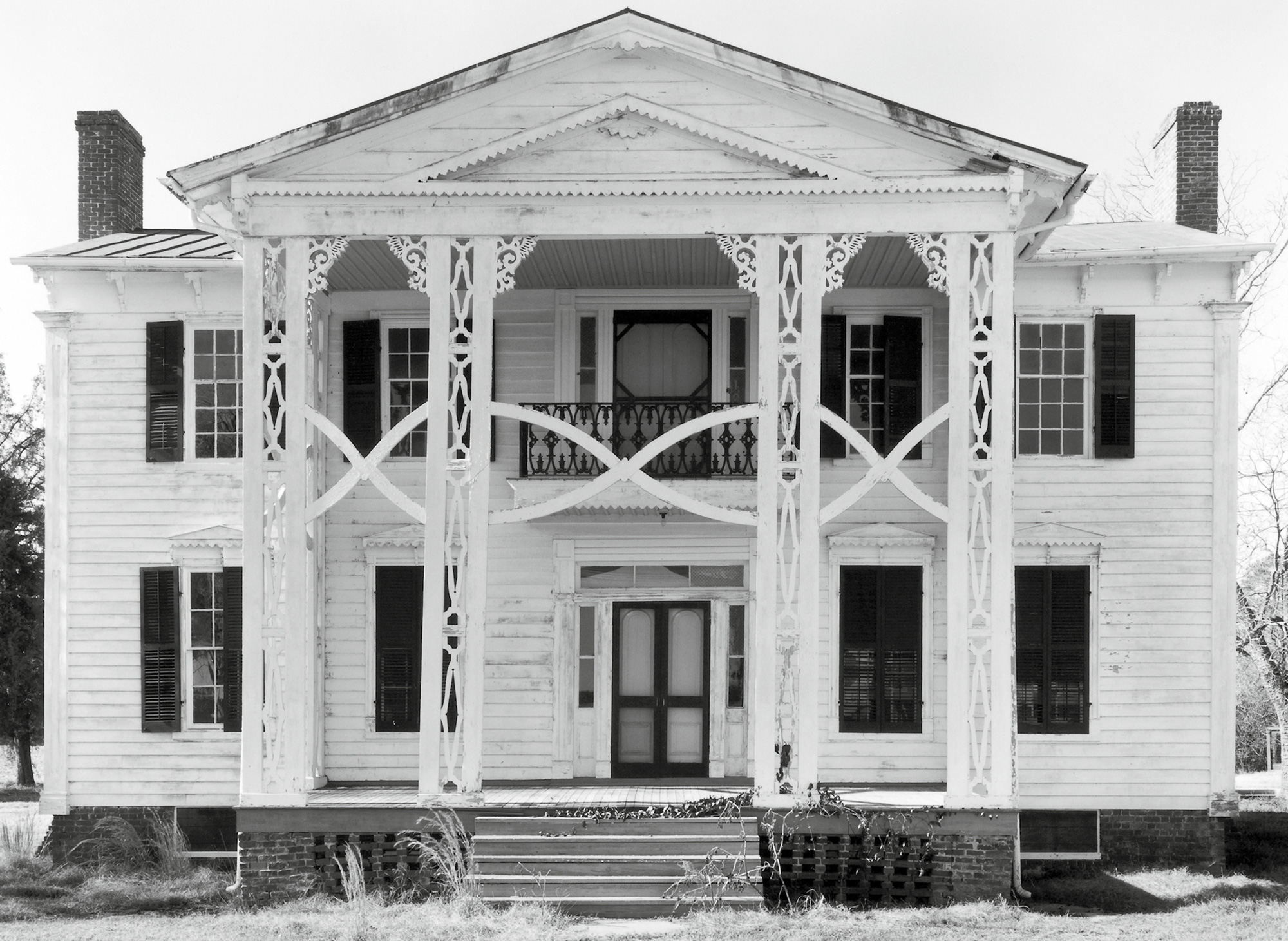Architectural Transplantations
The Palladian villa in Liberia
Adam Jasper

Take a look at this 1820s house from North Carolina, photographed by Max Belcher in 1986. Symmetrical, imposing, upright. At the front, a porch exaggerated beyond any excuse of keeping off the weather. Ornately worked pillars reach up two stories, linked by wooden fretwork and braced by large wooden bows curved like ribbons. It would be a stretch to call those two-dimensional forms “columns,” or the tracery that crowns them “capitals,” but the large triangular pediment unambiguously asserts this building as a distant descendant of the classical temple—part country home, part mausoleum. The long grass at the base of the steps carries the same hint as the fly in a still life: the photograph says, this too will soon be gone.
No style is as central to the historical imagination of Western architecture as that of the Palladian villa, an application of Roman sacred architecture to the display of Renaissance private wealth. Working in sixteenth-century Venice, Andrea Palladio didn’t just copy the classical orders as they had been handed down from Vitruvius; he fashioned them into a new language of architectural expression. The mastery of this ornamental language in Palladio’s era was architecture. Everything else was just building.
In the eighteenth century, no other architecture proved so amenable to English taste; Palladianism was perfectly calibrated to fulfill the need for graceful self-display. Palladian architecture could evoke both rich tradition and individual whimsy without apparent contradiction. The classical villa set in an arcadian landscape allowed its owner to lay claim to an authority founded on neither church nor state, to discreetly conceal his dependence on labor, and, at the same time, nonchalantly naturalize his ownership. Less a style than a complete ideology, the neoclassical villa has proved, despite periods of neglect, to have an extraordinary capacity for translation, appearing across oceans and centuries, and in unexpected forms. Erwin Panofsky famously found it sublimated in the Rolls-Royce radiator.
The style became less nonchalant when it moved over the Atlantic to the American south, where it became the model for the fine southern houses of plantation owners. Here, the ornamentation became both more pretentious and more fragmentary. Columns swelled and grew, and the dignified repose of the villa acquired a look of vigilance. The villa no longer contemplated the landscape; it faced it down. The ideological message changed insidiously too, as if insinuating that, well, after all, even Aristotle says that not all men are born to be free.